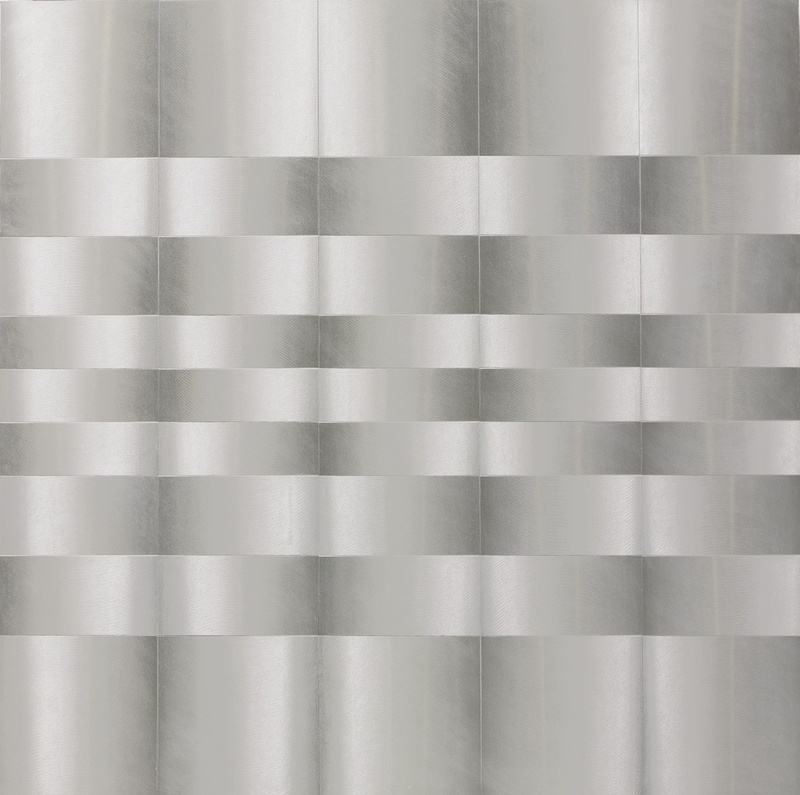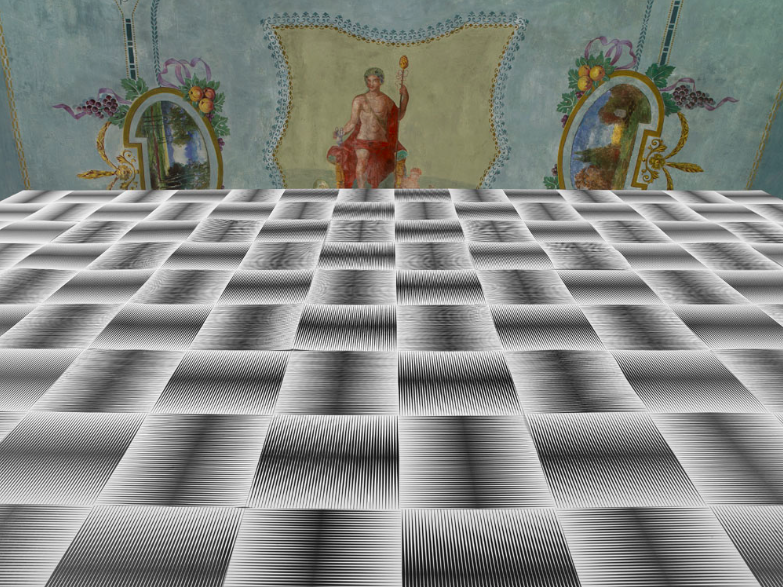Artist Spotlight: Getulio Alviani
Born: Udine, Italy, 1939.
After a long battle with illness, the acclaimed Italian artist, author and designer Getulio Alviani died on the 24th February 2018, in his home city of Milan, aged 78. Alviani, who was considered a protagonist of Optical and Kinetic Art, leaves behind a rich and prestigious legacy.
Having become interested in art (and particularly geometric drawing) at a young age, Alviani gradually channelled his creative focus towards design-oriented approaches to painting and sculpture. His curiosity for new technologies and innovation was prominent throughout his artistic career.

Getulio Alviani, Superficie testura vibrante (Vibrant Textured Surface) (1969). Image courtesy artist and gallery.
Alviani and post war technological innovation
During the 1950s, Alviani closely followed the pursuits of contemporary architects and engineers and he transferred much of the influences he took from them into his sculptural practice. His aluminium pieces, such as the famous The Wires series, which drew inspiration from aerial electrical wires, received immediate recognition for their dynamic minimalist forms. Though many of his peers revered the era’s technological advancements, Alviani focused not on their novelty but on the connection he could form between technology and his artistic practice.
By the 1960s, with his participation in the ‘Arte Programmata,’ or Programmed Art, shows in Venice, Rome, Dusseldorf and Leverkusen, Alviani’s international reputation was accelerating. He went on to exhibit at the 1964 Venice Biennale, and in 1965 was featured in the renowned exhibition, ‘The Responsive Eye,’ at Moma, New York.

Installation shot, ‘Getulio Alviani,’ (2006) Gallery Vistamare Mala di Lubiana, Pescara, Italy. Image courtesy artist and gallery.
Alviani’s metallic sculptures shimmer with chromatic intensity; their patterned structures reflect an abstracted labyrinth of colour. In doing so, they mirror the act of seeing. His ‘Superficie a testura vibratile,’ or Vibrating Texture Surface series (circa 1970), for example, exaggerate the transience of light, movement and reflection upon geometric surfaces. These artworks engage and disorientate the viewer, calling into question notions of perception.
Nouvelle Tendance Recherches Continuelles
Alviani had a pedagogical vision for art in society. He believed exhibition spaces should be used for renewing our understanding of cultural and scientific phenomena as well as for sensory experiences. Alviani was a professor of painting at the Academy of Fine Arts of Carrara, a member of the international movement “Nouvelle Tendance Recherches Continuelles” (New Tendencies). Additionally, he was the director of the Museum of Modern Art in Ciudad Bolivar, Venezuela, where he dedicated himself to editing texts and curating exhibitions on the leading figures of visual research at an international level.
Bio:
Getulio Alviani presented works in important exhibitions, including the founding of Arte Programmed in the Olivetti store in Milan,1962; the 1964 Venice Biennale; the historic ‘The Responsive Eye’ at the MoMa, New York, in 1965; and more recently, in 2013, ‘Dynamo’ at the Grand Palais in Paris, which brought together all the protagonists of Kinetic art. MoMa’s exhibition, ‘Thinking Machines: Art and Design in the Computer Age, 1959-1989,’ 2017, which showed Alviani’s work in relation to the advent of new information technologies, was received with particular admiration.
Author: George Greenhill
Cover image: Getulio Alviani, Testura Grafica X Ortogonale (1972). Image courtesy artist and gallery.
